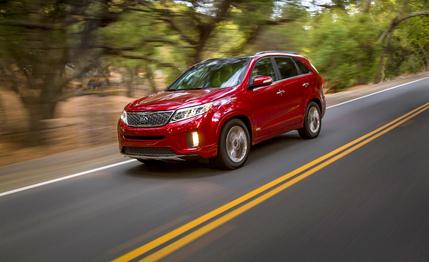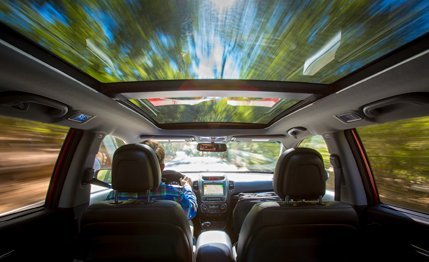
 Instrumented Test
Instrumented Test
Nobody wanted the last Lotus Elan except for Kia. In 1995, Lotus managed to sell the Koreans the rights to its overpriced, front-drive roadster, and when it resumed production the following year as the Kia Elan, it looked like it had gone on a Pep Boys’ bender. A year later, Kia went bankrupt and collapsed into Hyundai’s financial embrace. The point of this story is not to remind you that the final Elan was an automotive succubus. Rather, the point is that the Lotus affair may have been Kia’s last big, dumb mistake.
We haven’t seen Kia roll snake eyes since hooking up with Hyundai. The product design and build quality have all improved radically, though the Buick-like Amanti was a close call. It’s gone, but the 2014 Kia Sorento features enough changes to be called “80-percent new” by the factory.
The latest Sorento has new bumpers, headlights, and taillights, plus a smaller grille. Body panels and glass are unchanged. Inside, the Sorento gets a new shifter, HVAC controls, and a multifunction 8.0-inch touch screen. In our SX V-6, the gauges have new faces and an electronic display that mimics an analog speedometer. Also, an accurate, electrically assisted rack-and-pinion steering system is new, though it probably won’t get noticed by the Sorento’s customers. Of greater consequence to families are the redesigned seats, which bring a 1.2-inch legroom increase in the second row and a 0.3-inch addition to the third.
The powertrain changes are major, but the net effect is minor. A 3.3-liter 24-valve DOHC V-6 with 290 horsepower and 252 pound-feet of torque replaces a 276-hp 3.5-liter V-6. The 3.3 is a $1600 option on the bottom-rung LX trim level and standard on EX, SX, and SX Limited models. At the track, our 4204-pound Sorento SX accelerated from zero to 60 in 7.0 seconds, a tenth slower than the last six-cylinder Sorento we tested. The six-speed shifts smoothly and without drama whether it’s cracking off redline shifts or snoozing through the gears in a mall parking lot. One thing that remains unchanged is the EPA fuel economy rating of 18 mpg city and 24 highway.


To improve ride quality and structural rigidity by 18 percent, the Sorento has a redesigned unibody with a new front subframe that carries a revised strut suspension and gains an upper brace. The multilink rear suspension gets bolted to a new subframe with revised mounting points and recalibrated shocks, spring rates, and bushings. The Sorento goes from riding on frozen Snickers bars to riding on lukewarm Snickers bars, which is more comfortable.
Were it our money, we’d consider Sorentos priced below $30,000. Above that mark, the three-row alternatives get larger and more refined. Think Dodge Durango, Ford Explorer, Honda Pilot, and Mazda CX-9. Measured against those yardsticks, the Sorento comes up short. Aside from a major uptick in ride suppleness, the Sorento remains what it always has been, a three-row SUV that easily fits in a garage. If that is all you want, the Sorento delivers. If you want to kill your car company, Kia will probably sell you the rights to the Elan.